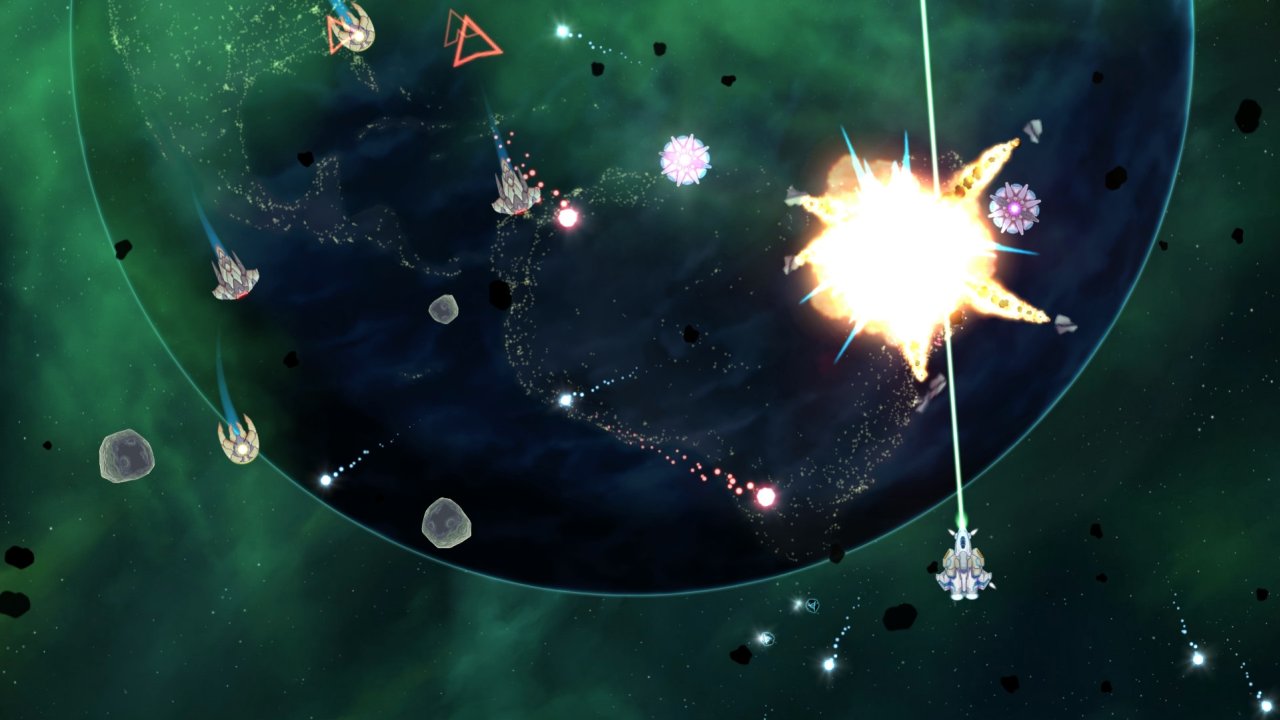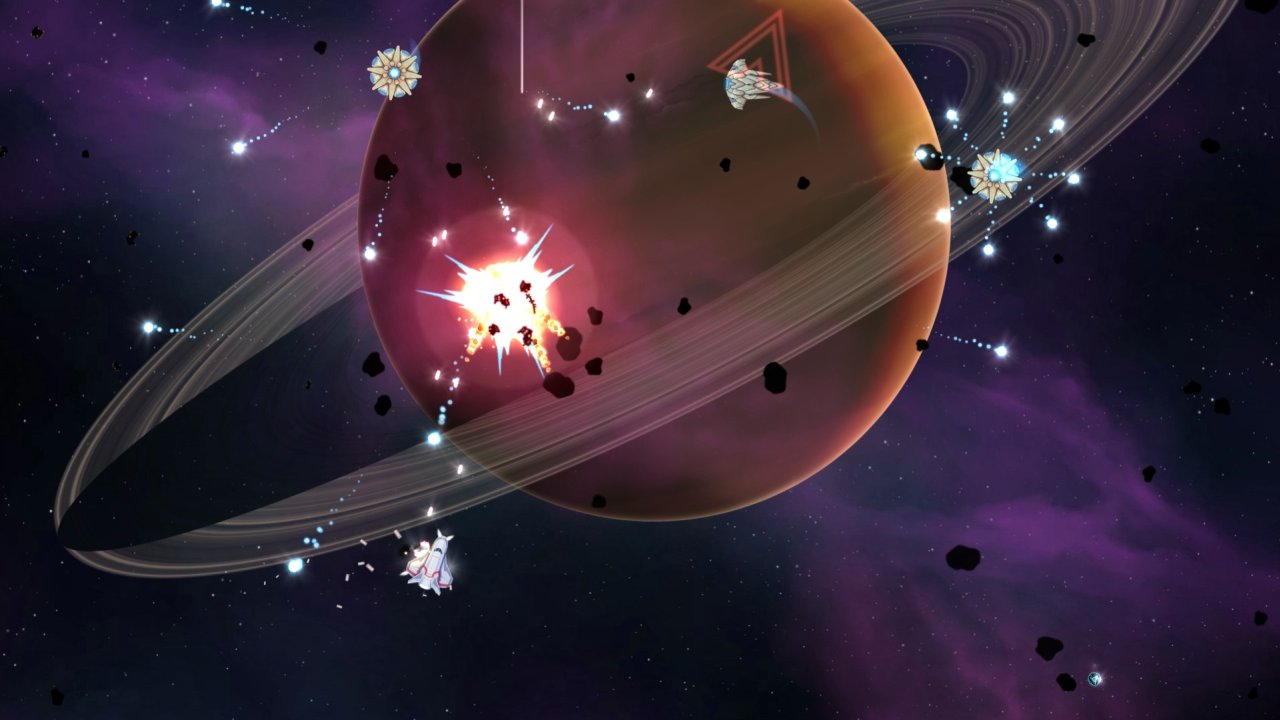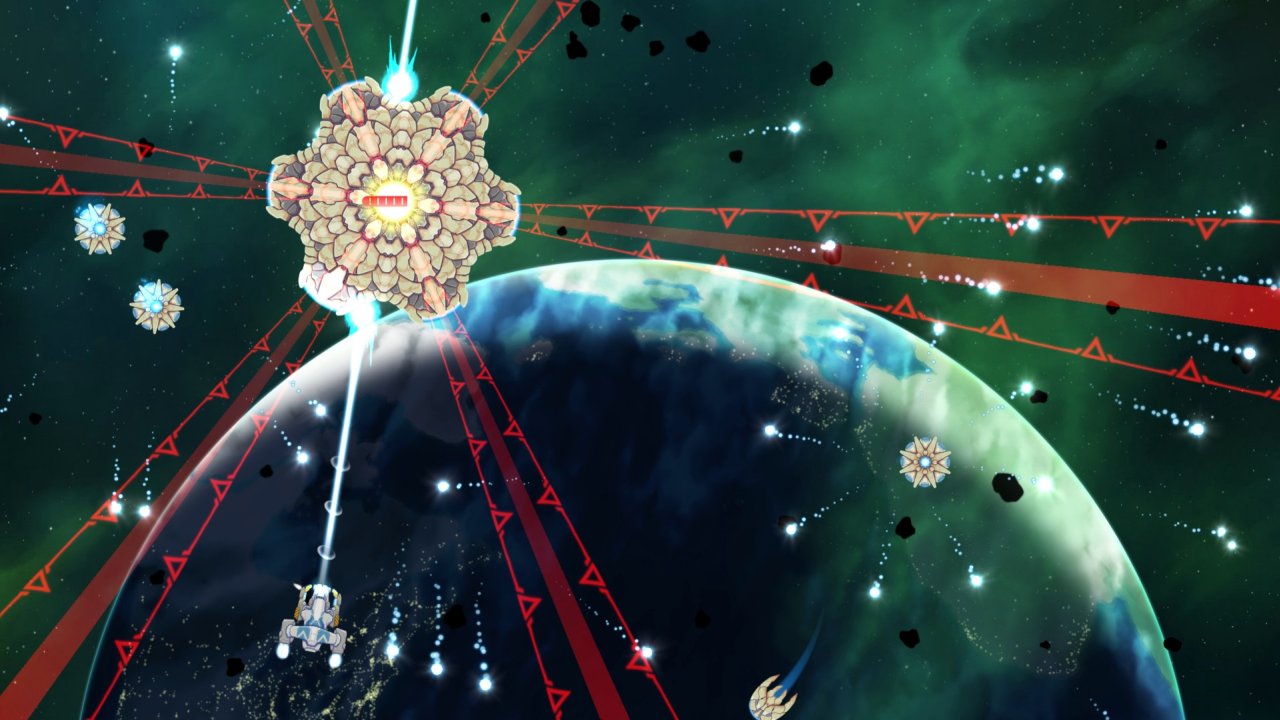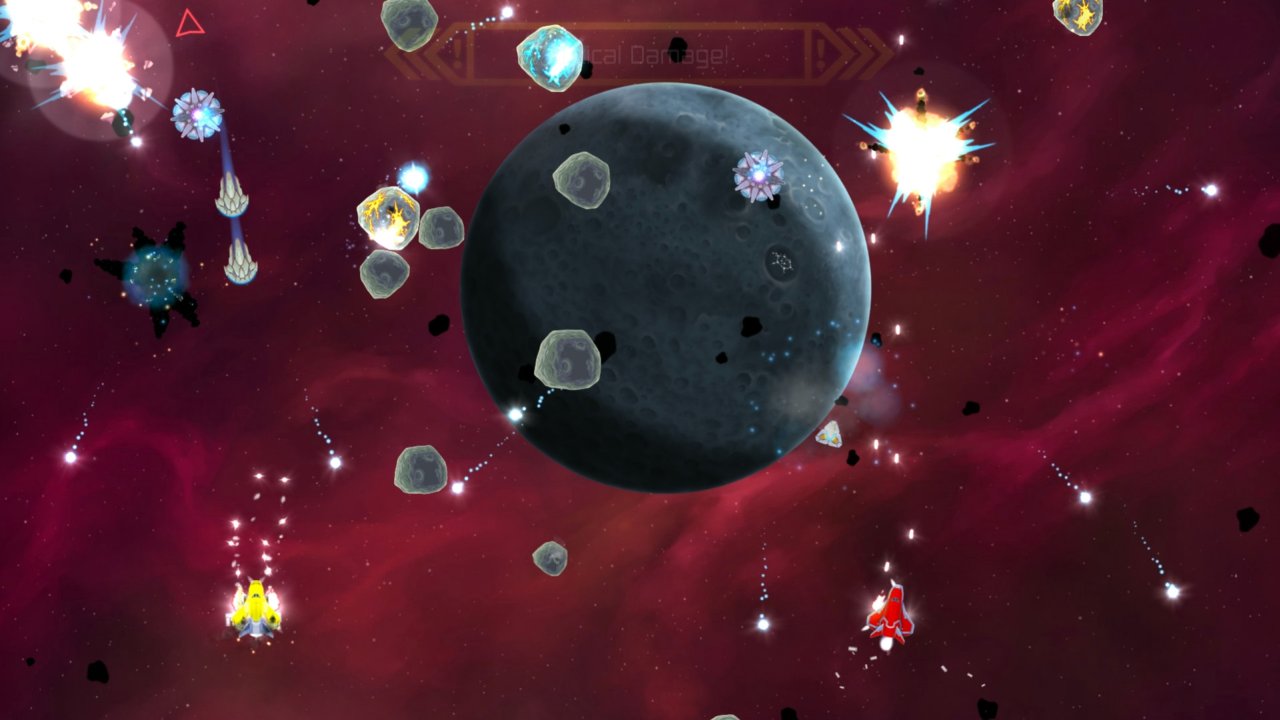Xenoraid Review
A fairly routine raid with an enjoyable twist
The shoot ‘em up genre is one where you largely know what to expect with its straightforward and conventional nature. It’s certainly no exception when it comes to indie developer 10ton’s latest entry, Xenoraid. The game plays it safe in most respects, providing an experience that most will be able to get the hang of quite quickly, and sticks to a formula retro diehards will instantly recognize. The core gameplay is classic SHMUP - you soar through the vast emptiness of space while dodging projectiles, and fire at increasingly difficult waves of enemy ships.

Xenoraid is basically the video game equivalent of eating at a TGI Friday’s. You go into it knowing what you’re getting, and you might be somewhat satisfied, but you probably won’t be blown away by super high quality or exotic dishes. Though that doesn’t mean the food offered still isn’t enjoyable in its own right.
To its credit, the game does come with a sort of “secret sauce” to spice things up a bit. Rather than merely controlling a single ship, you are permitted up to four spacecraft which can instantly be swapped out during your expeditions. This may not seem like a major game-changer on the surface, especially as there are only a handful of ship types to choose from, but it does add an interesting dynamic to the game and helps separate it a bit from the pack.
Your palette of ships in the early stages boils down to a few generic looking shuttles that spray rapid-fire cannons as well as missiles. As the game progresses you unlock a couple of larger ships which wield more effective artillery like cluster bombs, corrosive streams of blue plasma, and piercing lasers. Each ship comes with a primary and secondary weapon, the latter of which packs more of a punch but contains limited ammo and takes longer to fire. But although the ammo of your main weapons is infinite, you won’t want to go spamming the ZR trigger willy nilly, as they’ll overheat quickly, requiring you to scramble as you wait several seconds for the ship to cool down.
As you battle your way through a top-scrolling swarm of alien aircraft that seek to invade Earth, you can take advantage of the multitude of ships, as certain craft will be more ideal in different scenarios. Some artillery is more efficient against certain types of foes, and you’ll typically want to pit your smaller, quicker-firing ships against their smaller and more swift guys, for instance. They’re also more effective in evading heavy clusters of projectiles and pesky asteroid fields. On the other hand, the beefier, high-powered vessels are best served going up against larger, shielded alien ships and bosses, which absorb considerably more damage. Switching spacecraft also comes in handy when one ship overheats, as this will allow you to avoid painstakingly waiting for it to recover. Ship-swapping proves a subtle yet interesting tactic. It helps to breathe some life into an experience that flirts with repetition and dullness, especially early on, and rewards you for resourcefulness rather than purely raw skill.

Upgrades are pretty minimal, but can give you that extra edge when in a pinch. You’re able to increase the power of your weapons, as well as improve defense as you progress. You can also pay a visit to the “tech lab,” and invest credits in various buffs and benefits that last the duration of a given set of stages. These include decreased ship costs, devices that wipe out projectiles when your health is low, and a sort of kamikaze ability that deals a load of damage on surrounding enemies when your ship goes down.
So you’re sitting pretty with four ships at your disposal, each with their own health bar and weaponry, at the push of a button; surely there must be a catch here, right?
Well, herein lies the source of the game’s more strategic elements, relatively speaking. Your health bars do not recharge on their own, and must be restored with accumulated credits following each of the few dozen missions. This can get costly in a hurry when trying to manage four damaged ships, even when snagging additional credits occasionally loosed from downed enemies. You’ll need to be particularly wary of losing ships completely, since they cannot be redeemed, and must be replaced by purchasing one at a steeper cost than repairs would have been. This is especially frustrating if said ship had worked its way up the ranks and was decked out with upgrades. Setbacks like this can continue to pile up quite easily, and ultimately set the stage for unnecessarily difficult battles later on if you’re lacking in funds. This presents challenges to ponder and work through, lest you back yourself into a corner. I certainly set myself up for trouble on a couple of occasions - as I was essentially forced to restart an entire set of missions after spending virtually all my credits, and thus stuck with a weak and miniscule crew of fighters.
You may have barely survived a hard-fought battle of 100 enemy fighters with a couple of badly damaged ships, but at what cost? This is the type of question that Xenoraid will force you to ask yourself, and one that helps differentiate it from its SHMUP brethren. While this added pressure produced moments of frustration and rage, I ultimately appreciated its nuances in adding some depth. Granted, this layer of customization is tempered a bit by the fact that everything essentially resets following each group of stages.
The campaign is fairly brief, though it does come with a maddeningly tough hard mode once completed. In true arcade fashion, Xenoraid also offers an endless survival mode complete with three stages and online leaderboards. Those looking for replay value can find a steady stream of it here, and the leaderboards do well in providing some extra incentive, particularly amongst more competitive gaming types like myself. In essence, I can see myself returning for several survival mode romps to claw my way up the boards well before I return for another run through the campaign.

Another neat feature is a co-op mode with up to four players; each controlling one of four ships at once. Though owners of a single set of joy-cons be warned - I’ve found that in testing both joy-cons independently that the game stubbornly refuses to recognize them as separate controllers. This seems like a missed opportunity considering how simple the control scheme is. Still, co-op is a welcomed addition that really amps up the intensity, and proves an enjoyable way to spend 20 minutes shooting the breeze - as well as the aliens - with a friend or two. I was surprised to learn that co-op can also be played in survival mode, if you’re so inclined to double your efforts for that coveted high score.
Bells and whistles aside, this is still a top-down space shooter. That naturally means you won’t get a ton of variety or depth - and I’m not just referring to the environments and overall gameplay, but in this case, the enemy forces too. While the game thankfully randomizes things a bit by sending out foes in varying sequences, there are still only a handful of enemy ship types, and for the most part their characteristics and behaviors don’t differ all that much. In all fairness, a few of them do stand out with attributes like cloaking and regenerating shields, and some of the bosses come with unique designs and creative quirks too.
Each biome is basically differentiated by two things - enemy waves, and varying backgrounds displaying flat images of planets looming in the distance. The aesthetics are about as typical as it gets in the genre, albeit with some pretty solid explosion and particle effects thrown in. In keeping with another recent 10tons release, Time Recoil, the soundtrack stands out as one of the game’s strengths. It livens things up a bit with some atmospheric techno and electronica tracks laced with thumping rhythms.

Xenoraid doesn’t break a ton of new ground, but it offers plenty of fundamental shoot ‘em up gameplay that should at least satisfy fans of the genre. Its unique hook of ship shuffling and customization gives it something of a unique character, and leaves a greater impression than the blandness of yet another straight up SHMUP might have. Switch’s mobile functionality also lends itself well to the straightforward and short burst gameplay design. Everything is fairly minimalistic here, but at a budget 10 USD you get a respectable amount of gameplay when factoring in co-op, survival mode, and hard mode. I’d say that’s a space battle worth fighting.
 Comments
Comments













